Advanced orchid research
The MADS-box AP3 gene of Phalaenopsis is regulated by microRNA (Li-Ching Hsieh)
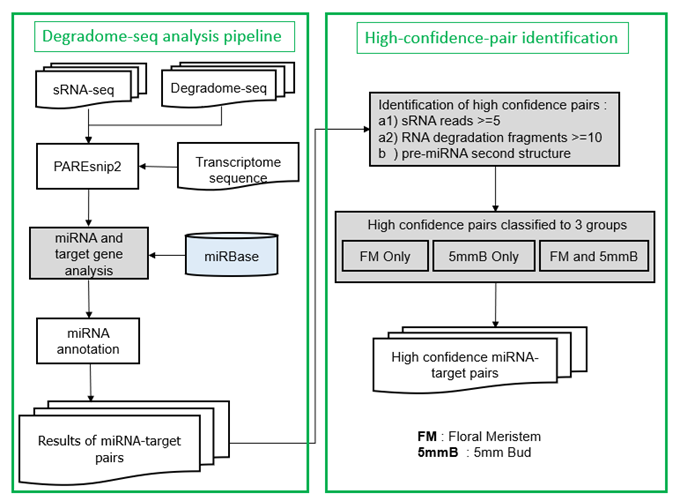
We utilized the bioinformatics analysis platform of degradome we developed to discover that the MADS-box AP3 gene, which is related to the formation of lips and petals, is regulated by microRNA in Phalaenopsis. This study advances our understanding of the regulation of the Phalaenopsis flowering process mediated by miRNAs.
Discovery of key genes that control orchid pattern (Jun-Yi Yang)

We found that the infection of orchids by phytoplasma can change the development pattern of orchids and make the monopodial Phalaenopsis produce axillary buds. This morphological change is a consequence of the degradation of the CYC2/3 transcription factor by the SAP11 effector. At the same time, the 35S:CYC2/3 RNAi transgenic Phalaenopsis also showed the sympodial pattern.
Regulatory network for FOREVER YOUNG FLOWER-like genes in regulating Arabidopsis flower senescence and abscission (Chang-Hsien Yang)
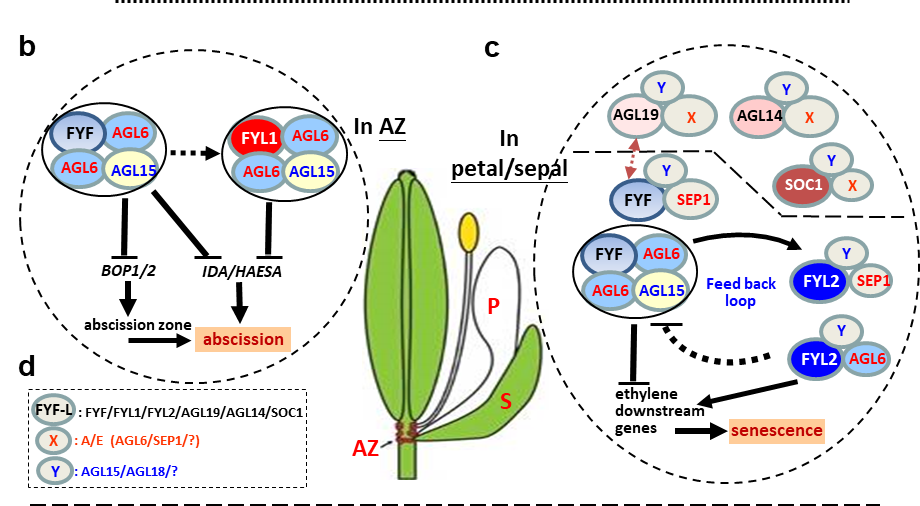
We found two groups of FYF-like genes, FYF/FYL1/FYL2 and SOC1/AGL14/AGL19 play important role in regulating flower senescence and abscission. We also found that FYF-like proteins can form heterotetrameric complexes with different combinations of A/E functional proteins (such as AGL6 and SEP1) and AGL15/18-like proteins to perform their functions. These findings greatly expand the current knowledge behind the multifunctional evolution of FYF-like genes and uncover their regulatory network in plants. These studies was published in Communications Biology (Chen et al., 2022)。
Multifunctional evolution of B and AGL6 MADS box genes in orchids
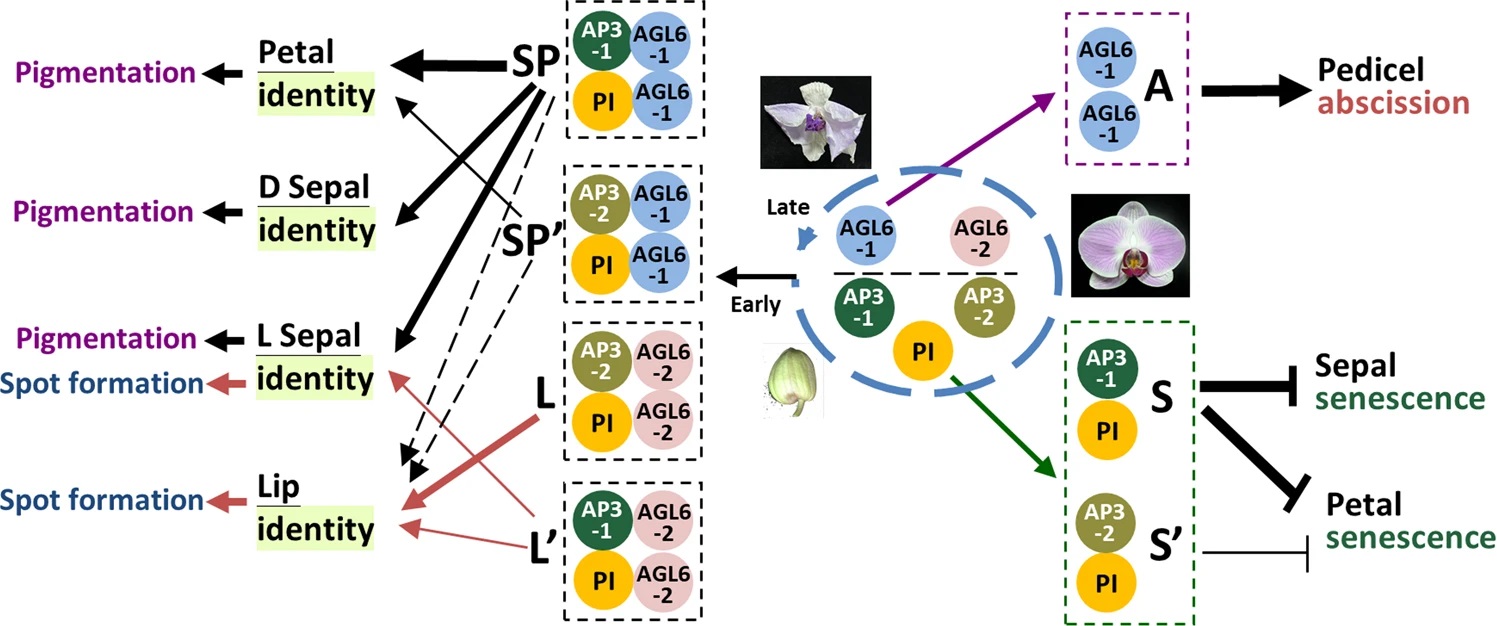 The multifunctional evolution of P-code genes in orchids.
The multifunctional evolution of P-code genes in orchids.
Distance-based measurement determines the coexistence of B protein hetero- and homodimers in lily tepal and stamen tetrameric complexes
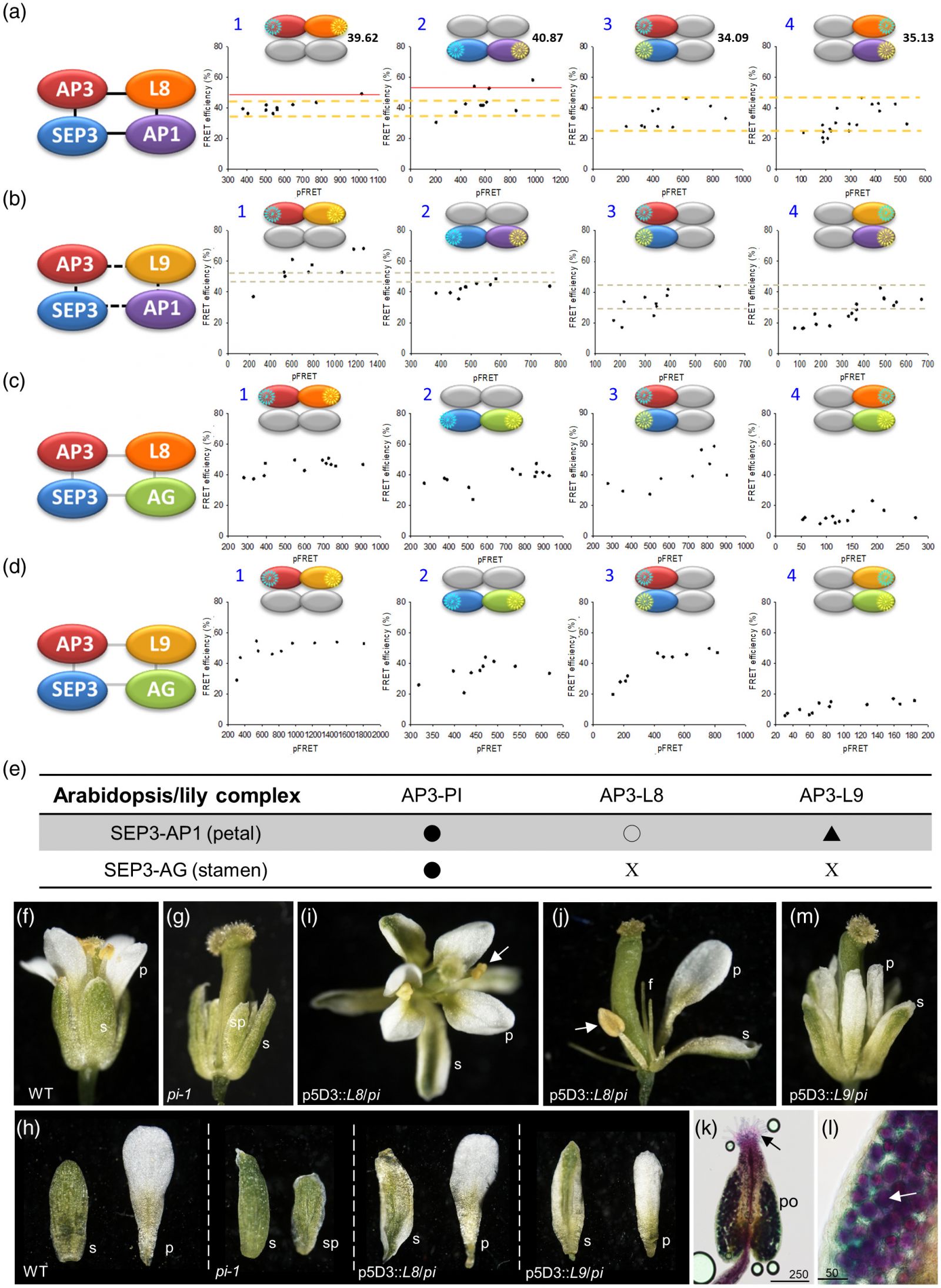 Detection of the formation of tetrameric complexes containing lily B function proteins with Arabidopsis AP3/SEP3/AP1 or AP3/SEP3/AG and the phenotypic analysis of Arabidopsis pi-1 mutants transformed with p5D3::LMADS8 and p5D3::LMADS9.
Detection of the formation of tetrameric complexes containing lily B function proteins with Arabidopsis AP3/SEP3/AP1 or AP3/SEP3/AG and the phenotypic analysis of Arabidopsis pi-1 mutants transformed with p5D3::LMADS8 and p5D3::LMADS9.
Silencing of FOREVER YOUNG FLOWER-Like Genes from Phalaenopsis Orchids Promotes Flower Senescence and Abscission
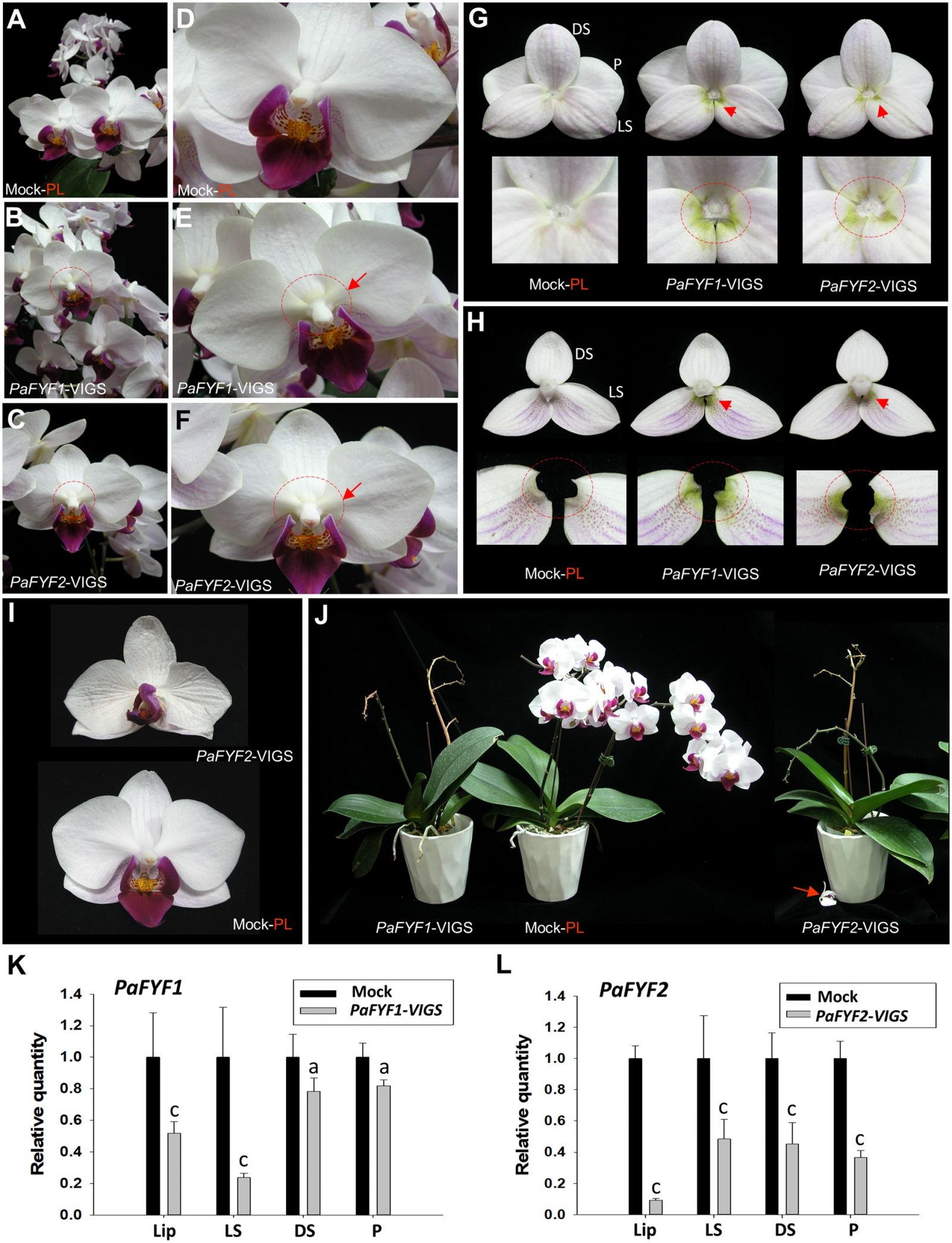 PaFYF1/2-VIGS-PL Phalaenopsis Little Gem Stripes plants show early flower senescence and abscission.
PaFYF1/2-VIGS-PL Phalaenopsis Little Gem Stripes plants show early flower senescence and abscission.
Regulatory network for FOREVER YOUNG FLOWER-like genes in regulating Arabidopsis flower senescence and abscission
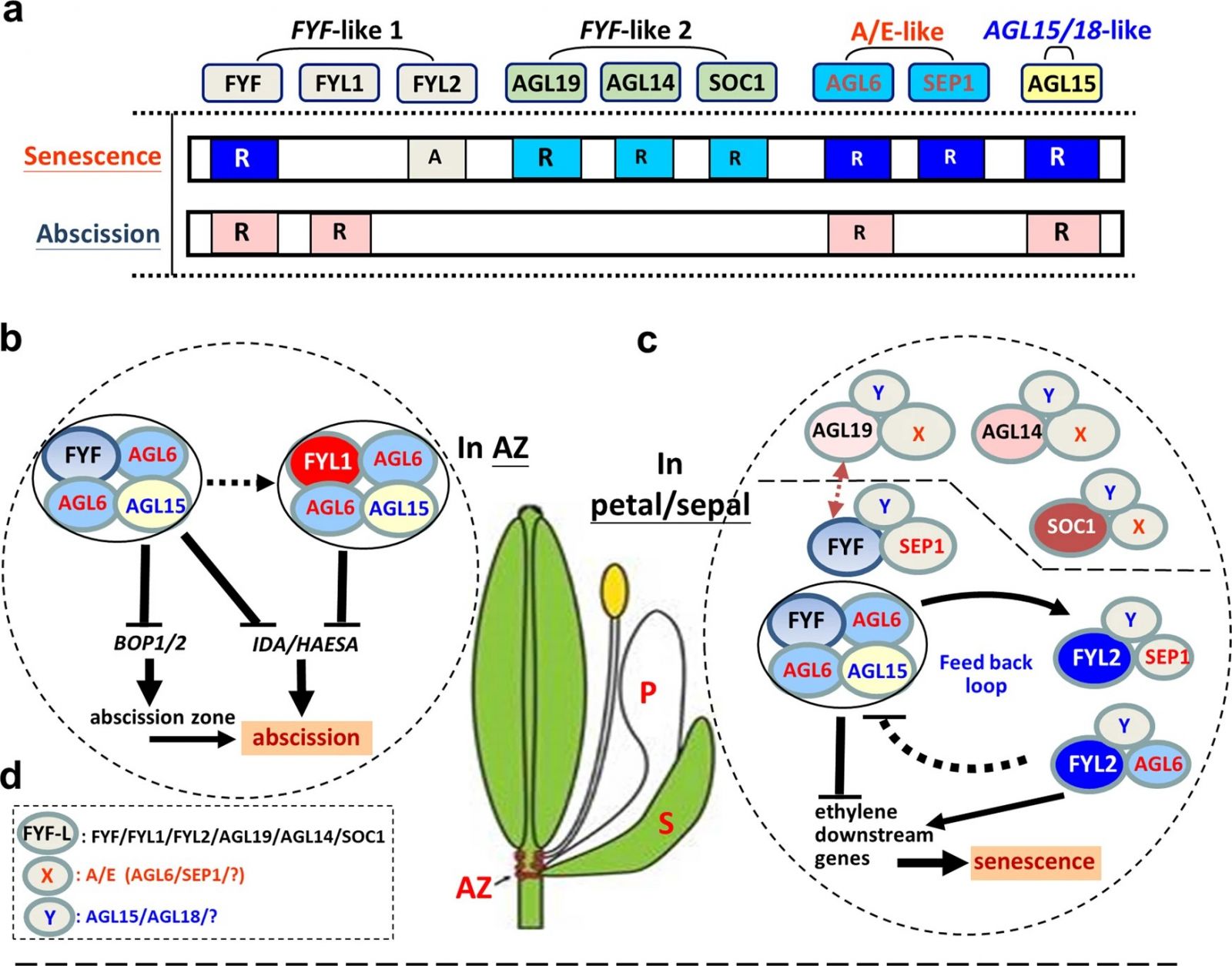
The functional evolution and regulatory network of the FYF-like genes in regulating flower senescence/abscission.
A tetraspanin gene regulating auxin response and affecting orchid perianth size and various plant developmental processes
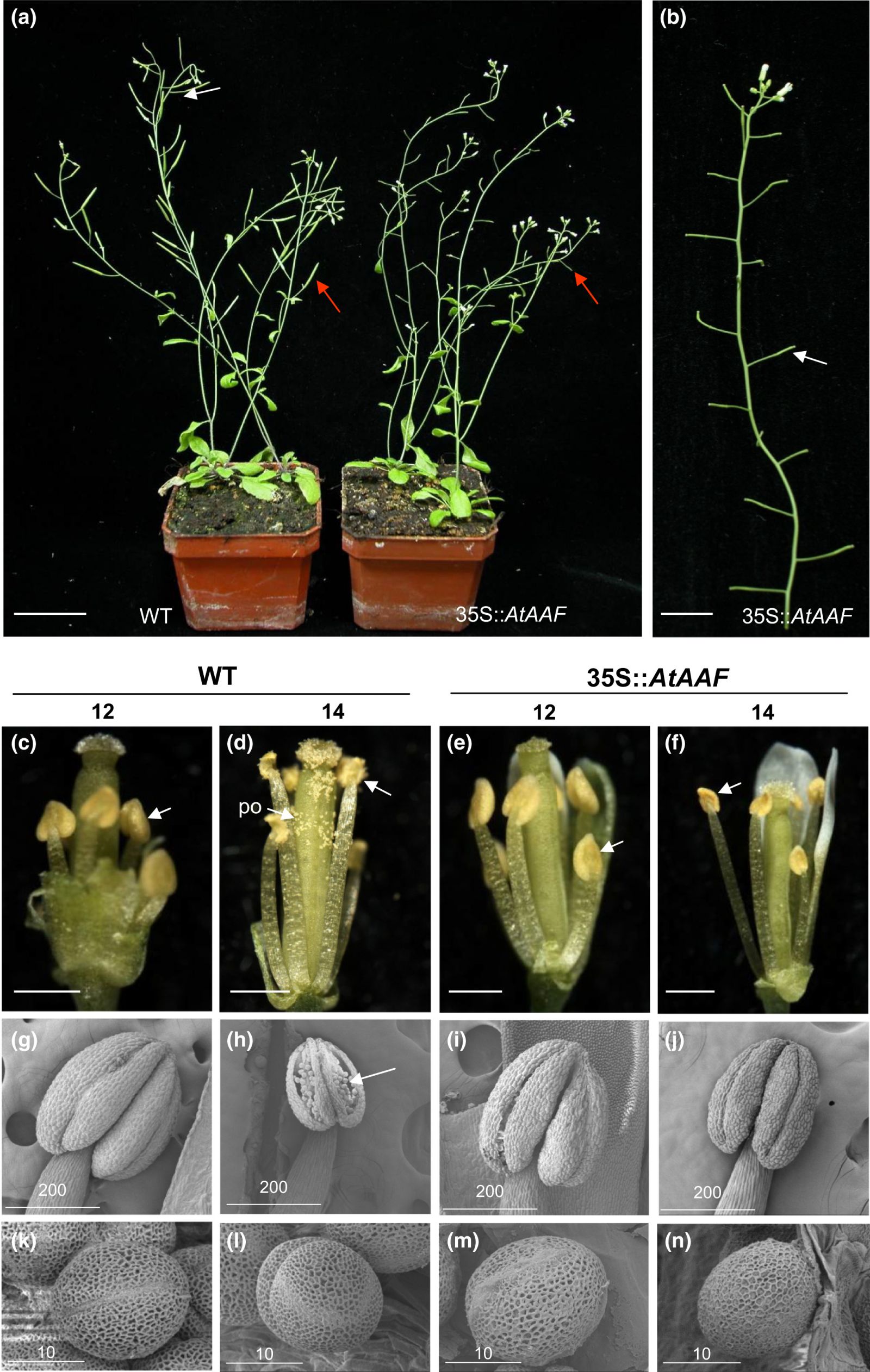 Phenotypic analysis of Arabidopsis plants ectopically expressing AtAAF. (a) A 35S::AtAAF plant (right) was sterile and produced short siliques (arrow), whereas wild-type plants (WT, left) produced long, well-developed siliques (arrow). Bar = 30 mm. (b) Inflorescences from a 35S::AtAAF plant that showed sterility with short siliques (arrow). Bar = 10 mm. (c–f) Indehiscent anthers (arrow) were observed at stage 12 in WT plants (c), stages 12 (e), and 14 (f) 35S::AtAAF flowers compared with stage 14 wild-type flower (d), which showed normal anther dehiscence (arrow) and pollen (po) release. Bar = 0.5 mm. (g–j) Close-up of stage 12 (g) wild-type, stages 12 (i), and 14 (j) 35S::AtAAF anther compared with stage 14 wild-type anther (h) by SEM, which showed normal anther dehiscence and pollen (arrow) release. Bar = 200 μm. (k–n) Close-up of the stage 12 (k), 14 (l) wild-type and stage 12 (m), 14 (n) 35S::AtAAF pollen grains by SEM. Bar = 10 µm
Phenotypic analysis of Arabidopsis plants ectopically expressing AtAAF. (a) A 35S::AtAAF plant (right) was sterile and produced short siliques (arrow), whereas wild-type plants (WT, left) produced long, well-developed siliques (arrow). Bar = 30 mm. (b) Inflorescences from a 35S::AtAAF plant that showed sterility with short siliques (arrow). Bar = 10 mm. (c–f) Indehiscent anthers (arrow) were observed at stage 12 in WT plants (c), stages 12 (e), and 14 (f) 35S::AtAAF flowers compared with stage 14 wild-type flower (d), which showed normal anther dehiscence (arrow) and pollen (po) release. Bar = 0.5 mm. (g–j) Close-up of stage 12 (g) wild-type, stages 12 (i), and 14 (j) 35S::AtAAF anther compared with stage 14 wild-type anther (h) by SEM, which showed normal anther dehiscence and pollen (arrow) release. Bar = 200 μm. (k–n) Close-up of the stage 12 (k), 14 (l) wild-type and stage 12 (m), 14 (n) 35S::AtAAF pollen grains by SEM. Bar = 10 µm
Intelligent sustainable food crop biotechnology
Using Sodium Azide to induce two large scale and long effect blast resistant genes (Chang-Sheng Wang)
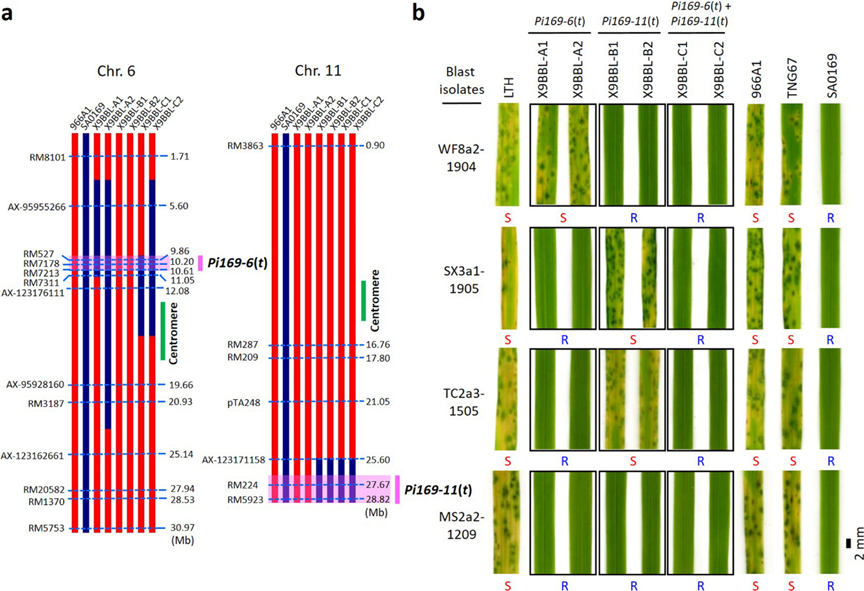
Professor Chang-Sheng Wang Professor collaborated with Liang-Jwu Chen, Wen-Hsiung Li and division of Plant Pathology of TARI to map resistant genes in rice blast disease in mutant line SA0169, was obtained by the sodium azide mutagenesis, identify complementary resistant in two genes, and contain broad-spectrum resistant to 187 blast isolates. A paper described this work was published in Rice (2022).
Discover POLD1 as the key gene for cassava mosaic virus resistance (Wilhelm Gruissem)
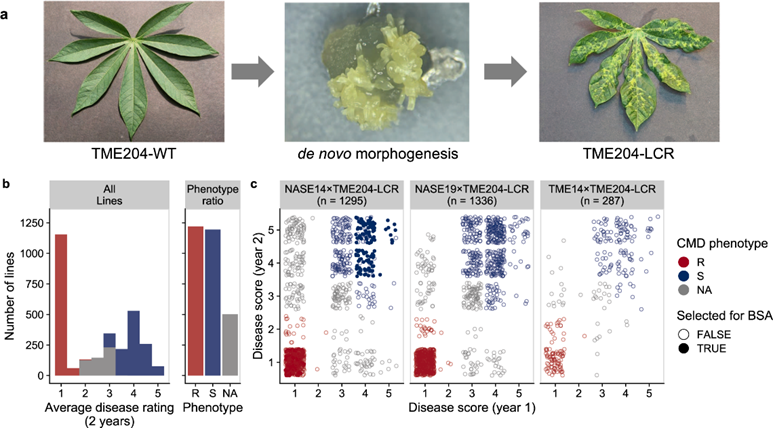
Cassava is staple root crop that feeds nearly a billion people worldwide, but the infections by cassava mosaic virus will suppresses yields across the tropics. The dominant CMD2 locus confers resistance to cassava mosaic virus. We discover that CMD2-type resistance is caused by a nonsynonymous, single nucleotide polymorphism in DNA polymerase δ subunit 1 (MePOLD1) located within the region. A paper described this work was published in Nature communications (2022).
Establishment of C4 model rice with high stress tolerance and high yield (Tuan-Hua David Ho)

We found that enhancing two plant NB-LRR disease resistance proteins in rice can establish C4 model rice with high rice vein density without affecting plant growth and yield penalty. And successfully artificially synthesized tissue-specific expression and simultaneous regulation of multiple gene promoters. This international cooperation is an important breakthrough in the construction of C4-like rice, These two works were published in Plant Cell Reports (Lo et al., 2022) and Plant Biotechnol. J. (Danila et al., 2022)
Mutations in DNA polymerase δ subunit 1 co-segregate with CMD2-type resistance to Cassava Mosaic Geminiviruses

Our data indicate that amino acid changes near the active centre of MePOLD1 likely mediate the dominant CMD2-type resistance.
Sugar starvation-regulated MYBS2 and 14-3-3 protein interactions enhance plant growth, stress tolerance, and grain weight in rice
 Proposed mechanism underlying reciprocal regulation of αAmy by MYBS1 and MYBS2 during sugar provision (A) and sugar starvation (B). Details of the model are described in the text.
Proposed mechanism underlying reciprocal regulation of αAmy by MYBS1 and MYBS2 during sugar provision (A) and sugar starvation (B). Details of the model are described in the text.
Rice Big Grain 1 promotes cell division to enhance organ development, stress tolerance and grain yield
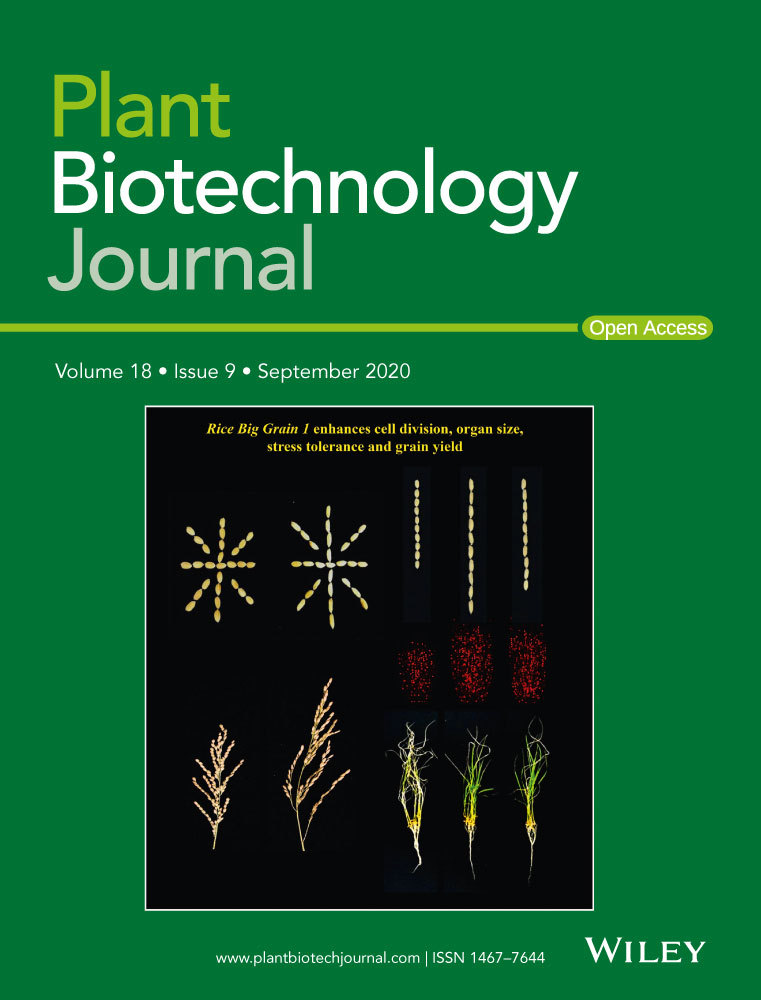
RBG1 is a unique protein with a role in enhancing cell division. Ectopic expression of RBG1 enhances auxin accumulation and modulates the auxin signalling pathway. Relationship of RBG1 to other genes regulating seed size
Novel rice iron biofortification approaches using expression of ZmYS1 and OsTOM1 controlled by tissue-specific promoters
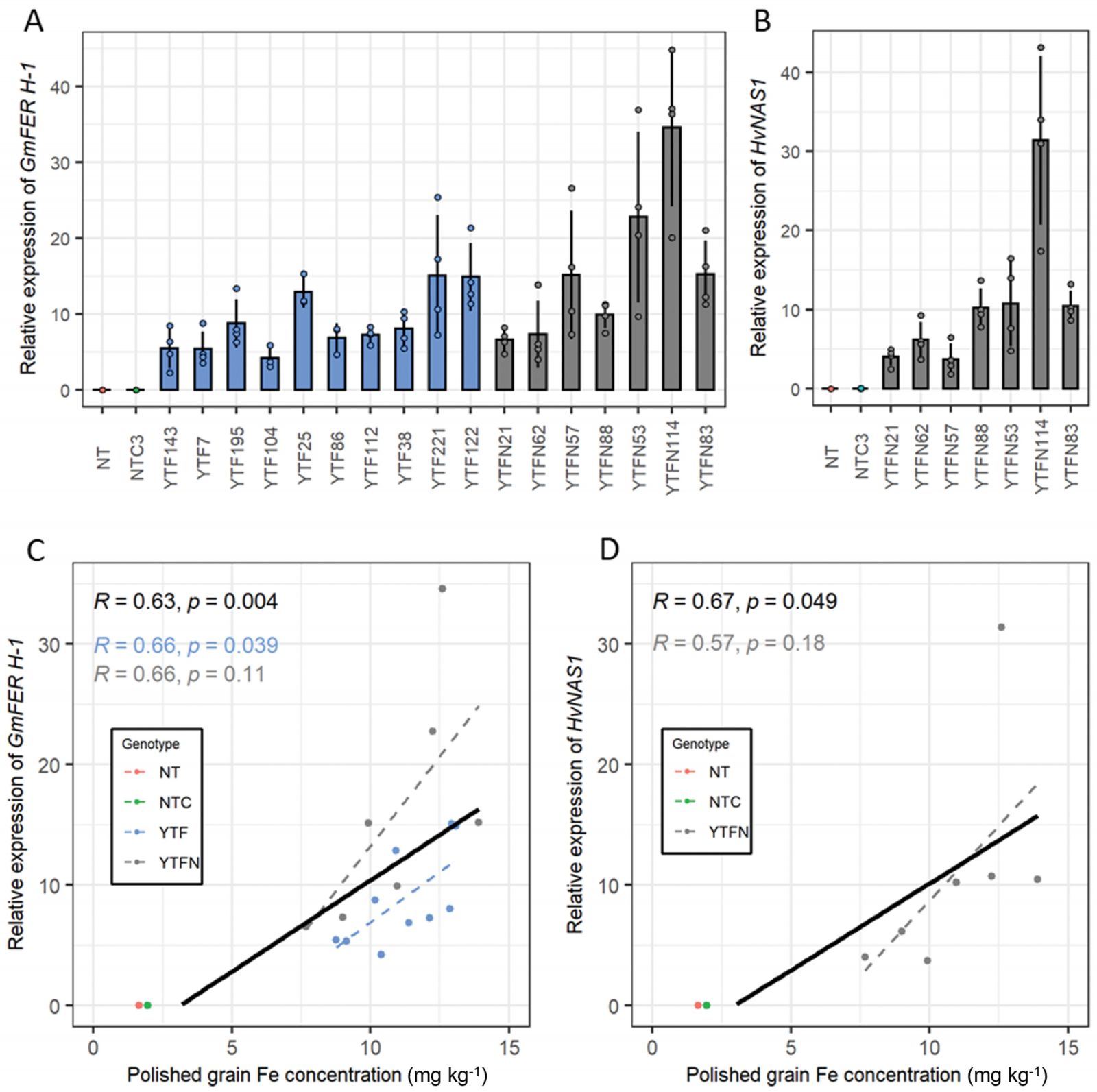 Expression of GmFER H-1 and HvNAS1 in 14–15 DAF T3 endosperm of the YTF and YTFN lines and its correlation with the polished grain Fe concentration in Glasshouse 1.
Expression of GmFER H-1 and HvNAS1 in 14–15 DAF T3 endosperm of the YTF and YTFN lines and its correlation with the polished grain Fe concentration in Glasshouse 1.
The Cassava Source–Sink project: opportunities and challenges for crop improvement by metabolic engineering
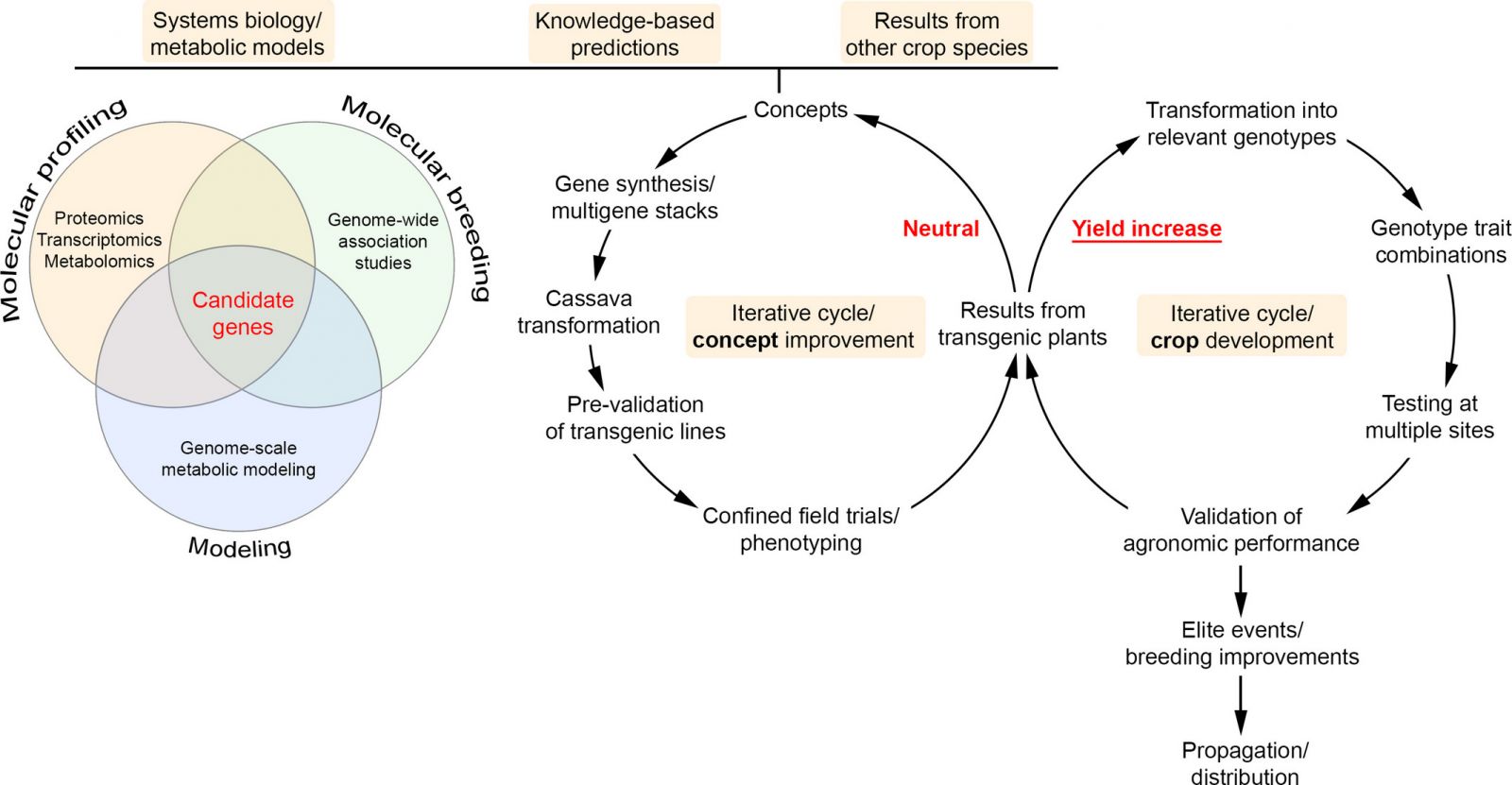 Schematic representation of the Cassava Source–Sink (CASS) strategy to improve cassava root and starch yield. Cassava genotypes are profiled for their metabolome, transcriptome and proteome. Data are compared with genome-wide association studies and metabolic predictions derived from genome-scale metabolic models. The genes and processes identified in all three approaches are candidate targets for genetic or biotechnological improvement. Together with knowledge-based predictions and results from other crop plants, the gene targets are tested in iterative cycles of cassava transformation, field testing, and agronomic performance evaluation. Top performing lines will enter iterative cycles of product development for high-yielding, resistant, and farmer-preferred genotypes.
Schematic representation of the Cassava Source–Sink (CASS) strategy to improve cassava root and starch yield. Cassava genotypes are profiled for their metabolome, transcriptome and proteome. Data are compared with genome-wide association studies and metabolic predictions derived from genome-scale metabolic models. The genes and processes identified in all three approaches are candidate targets for genetic or biotechnological improvement. Together with knowledge-based predictions and results from other crop plants, the gene targets are tested in iterative cycles of cassava transformation, field testing, and agronomic performance evaluation. Top performing lines will enter iterative cycles of product development for high-yielding, resistant, and farmer-preferred genotypes.
A single promoter-TALE system for tissue-specific and tuneable expression of multiple genes in rice
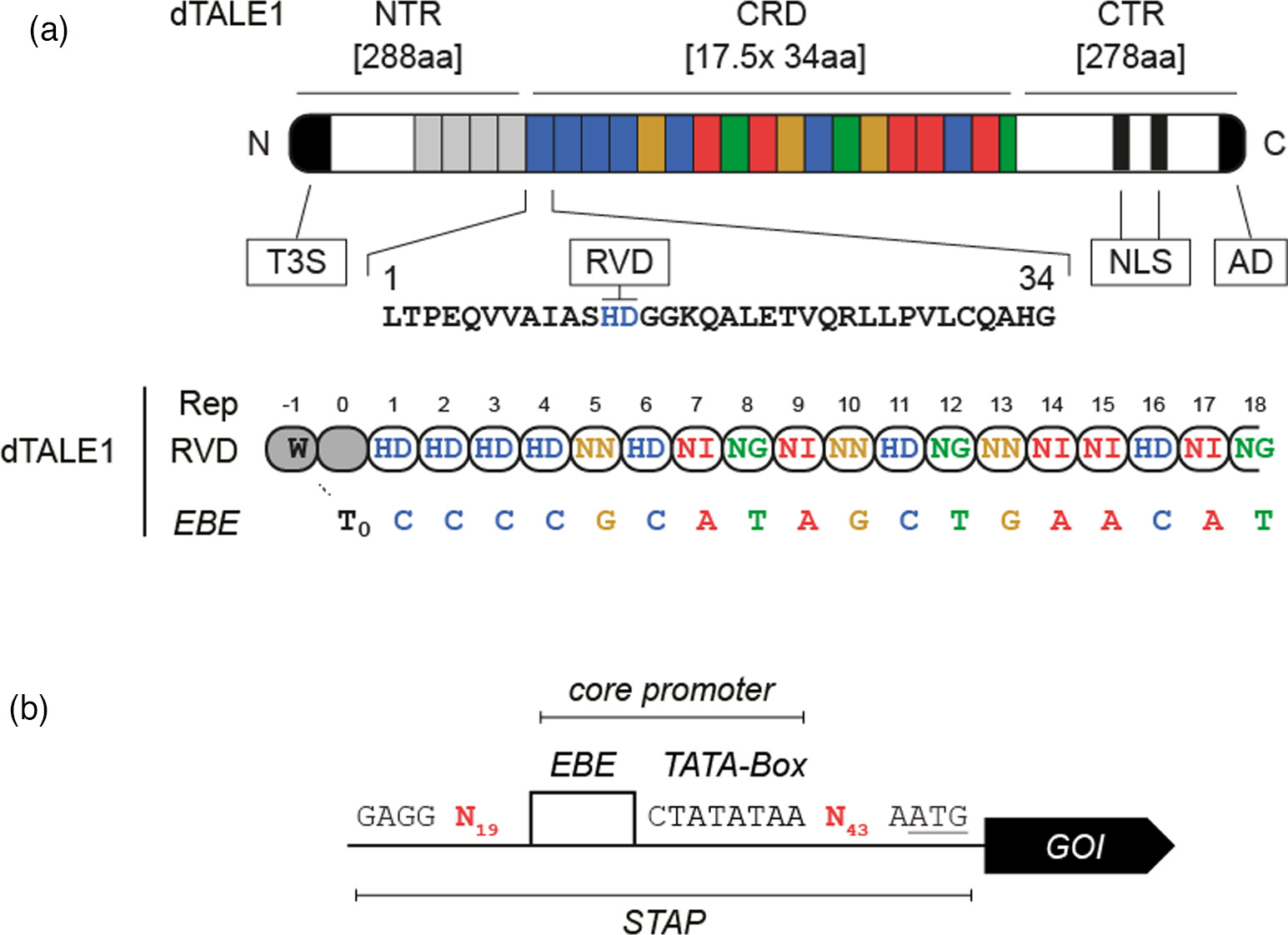
Application of TALEs as transcriptional regulators.
Precision functional food technology
Lucidone inhibits autophagy and MDR1 via HMGB1/RAGE/PI3K/Akt signaling pathway in pancreatic cancer cells
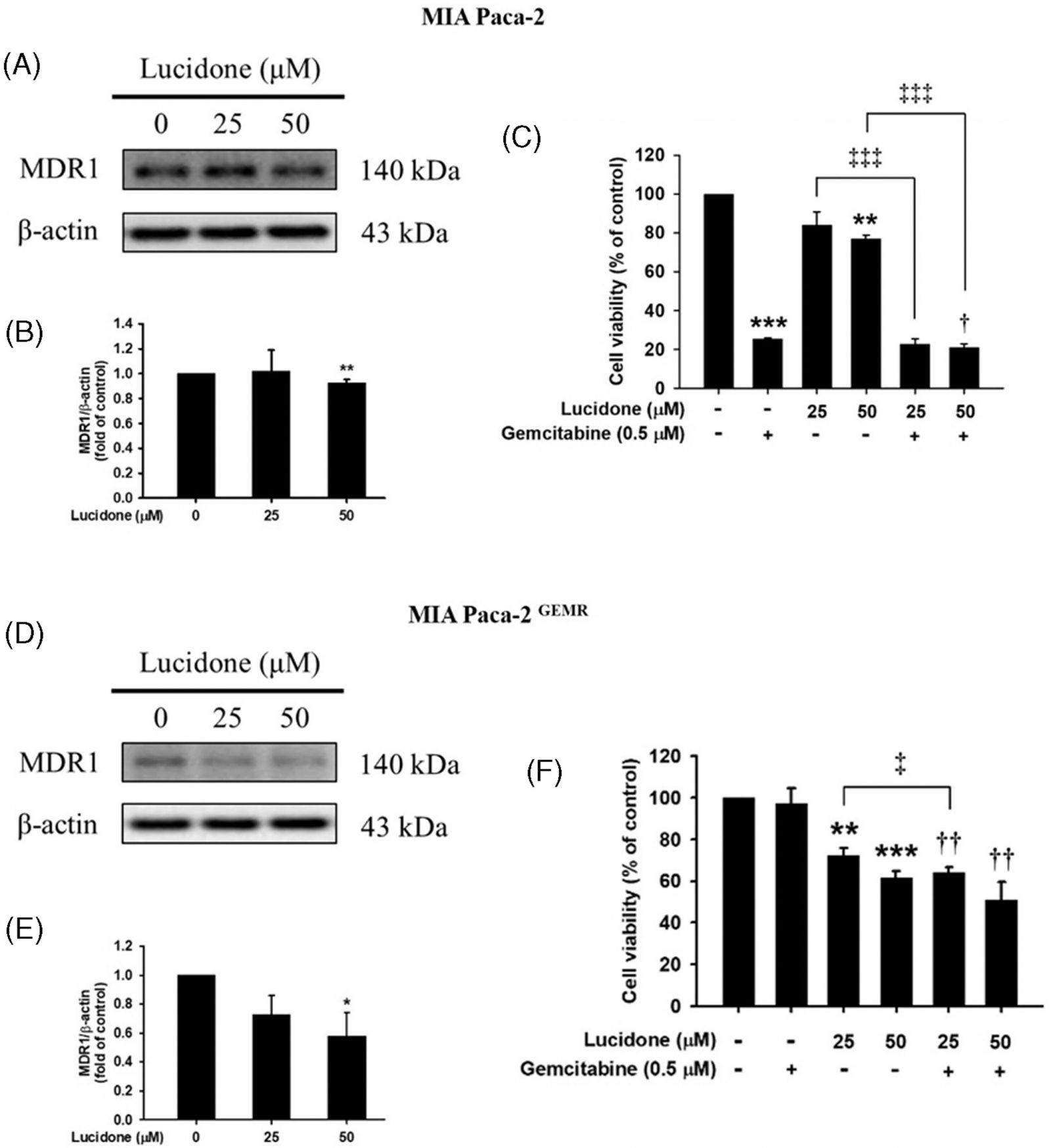 The natural compound lucidone inhibited the HMGB1/RAGE/PI3K/Akt signaling pathway and promoted apoptosis, consequently reducing autophagy in GEM-resistant cells. Enhanced effects of inhibited MDR1 protein expression and increased cytotoxicity occurred with lucidone combined with RAGE gene silencing or GEM treatment, indicating that lucidone could be a novel treatment option in PDAC.
The natural compound lucidone inhibited the HMGB1/RAGE/PI3K/Akt signaling pathway and promoted apoptosis, consequently reducing autophagy in GEM-resistant cells. Enhanced effects of inhibited MDR1 protein expression and increased cytotoxicity occurred with lucidone combined with RAGE gene silencing or GEM treatment, indicating that lucidone could be a novel treatment option in PDAC.
Protective effects of camellia and olive oils against cognitive impairment via gut microbiota-brain communication in rats
 Relationship between biomarkers and the abundance of individual microbes.
Relationship between biomarkers and the abundance of individual microbes.
Chemical analysis, moisture-preserving, and antioxidant activities of polysaccharides from Pholiota nameko by fractional precipitation
 In summary, three polysaccharides (PNP-40, PNP-60 and PNP-80) were purified from P. nameko via ethanol fractional precipitation. Their physiochemical properties of moisture-preserving activity and antioxidant activities were investigated. PNPs varied in composition, and all belong to heteropolysaccharides in different molar ratios. FT-IR spectral analysis has shown that PNPs are a polysaccharide compound containing amino groups.
In summary, three polysaccharides (PNP-40, PNP-60 and PNP-80) were purified from P. nameko via ethanol fractional precipitation. Their physiochemical properties of moisture-preserving activity and antioxidant activities were investigated. PNPs varied in composition, and all belong to heteropolysaccharides in different molar ratios. FT-IR spectral analysis has shown that PNPs are a polysaccharide compound containing amino groups.
Plant health technology
Discovery of genomic fragment deletion in Colletotrichum scovillei and the distribution and infection patterns of Liberibacter species in Taiwan (Miin-Huey Lee, Chia-Ching Chu)

A large genomic DNA fragment was demonstrated to contribute to virulence of Colletotrichum scovillei by comparative genomics and genetic analysis. Additionally, the distribution and infection patterns of Liberibacter species in host plants and vector psyllids in Taiwan were uncovered. Results from these works have been published in Frontiers in Microbiology (Hsieh et al., 2022) and Microbiology Spectrum (Lin et al., 2022)
Discovery of phytohormone gibberellin regulates the replication of Bamboo mosaic virus (Ching-Hsiu Tsai)

Once the plants were infected by the Bamboo mosaic virus, the metabolic pathway in the chloroplast was regulated to enhance the biosynthesis the phytohormone gibberellin (GA). GA could induce the expression of downstream genes, including the chloroplast proteins carbonic anhydrase (CA) and ferredoxin-NADP+ oxidoreductase (FNR), which were the assistant factor for BaMV replication. The results were published in New Phytologist (Huang et al., 2022).
Uncovering the mechanism of AGO5 gene regulation in virus infection (Yau-Heiu Hsu)
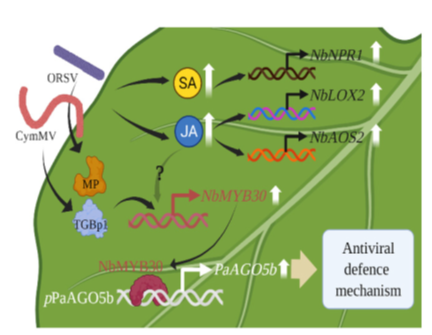
We found that the PaAGO5b gene is significantly induced after orchid virus infection, and the MYB30 transcription factor can bind to the promoter of the PaAGO5b gene to regulate gene expression. In addition, the expression of the PaAGO5b gene can also be induced by plant hormones jasmonic acid and salicylic acid. Finally, we discovered that overexpression of PaAGO5b in orchids can inhibit the accumulation of CymMV, resulting in a disease-resistant effect. A paper described this work was published in International Journal of Molecular Science (2022).
Intelligent image analysis recognizes important orchid viral diseases (Fuh-Jyh Jan)

The research team of Prof. Fuh-Jyh Jan developed the intelligent virus disease diagnosis system for orchids, including digital database collection and software construction. The results of this research have been published in Frontiers in Plant Science in 2022 (Tsai et al., 2022).
A diverse member of the fungal Avr4 effector family interacts with de-esterified pectin in plant cell walls to disrupt their integrity

Microbial lectins can serve multiple virulence roles as effectors during infections, including protection or noncatalytic disruption of polysaccharide substrates, enhancement of the hydrolytic activity of cell wall–degrading enzymes, and subversion of plant defense responses. Such functions may be particularly important for extracellular pathogens, as the carbohydrate-rich plant and fungal cell walls form the main interface of interaction between plants and pathogens in the apoplast and are consequently reciprocally targeted by each side seeking to gain an advantage.
Generation of Mild Recombinants of Papaya Ringspot Virus to Minimize the Problem of Strain-Specific Cross-Protection

We conclude that our approach is a fast and effective way of minimizing the problem of strain-specific cross-protection of HA 5-1 in Taiwan, Thailand, and Vietnam, as well as for PRSV strains from other geographic regions. Besides, the most effective way to solve the strain-specific problems is to generate a mild strain from the local prevailing severe strain.
Detection of Odontoglossum Ringspot Virus Infected Phalaenopsis Using a Nano-Structured Biosensor
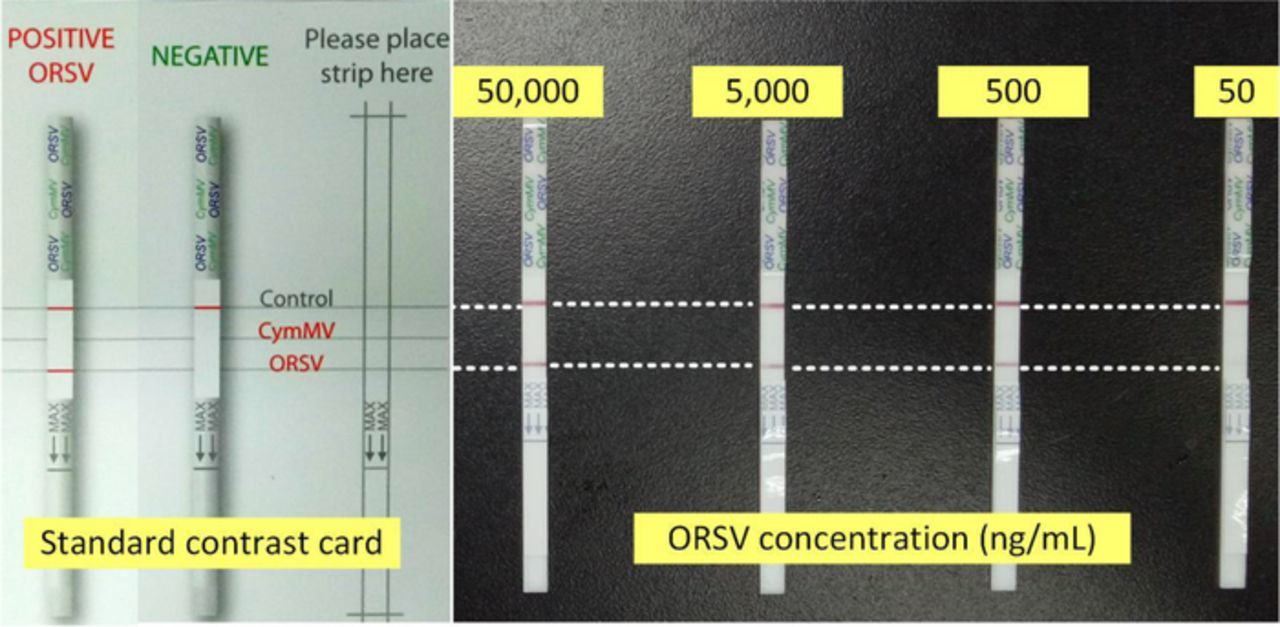 In this study, we propose a label-free and accurate biosensor for direct detection of ORSV-infected Phalaenopsis using a sample crude extraction from fresh leaves. The core or the proposed biosensor is the nanostructured electrode that was made by uniformly depositing GNPs on the AAO barrier layer.
In this study, we propose a label-free and accurate biosensor for direct detection of ORSV-infected Phalaenopsis using a sample crude extraction from fresh leaves. The core or the proposed biosensor is the nanostructured electrode that was made by uniformly depositing GNPs on the AAO barrier layer.
Orchid Virus Detection from Orchid Leaves Using Micro/Nano Hybrid-Structured Immuno-Electrochemical Biosensor

In this study, we used a semiconductor fabrication process to produce 1,810 micro/nano hybrid-structured sensing electrodes on an 8-inch reclaimed silicon wafer. The commonly used SAM process was then employed to immobilize the ORSV onto the sensing electrode.
The gibberellic acid derived from the plastidial MEP pathway is involved in the accumulation of Bamboo mosaic virus
 We propose a model that the upregulated expression of DXR immediately after BaMV infection could trigger the metabolic process of the MEP pathway in chloroplasts. The products of the MEP pathway involved the specific enzyme GGPPS2, which synthesizes GGPP used for GA biosynthesis. The results were also confirmed by the measurement of GA content in the BaMV-inoculated plant, where the GA content was elevated at 1 dpi and then declined. The newly synthesized GA could turn on the GA-response genes that might include the factors such as CA and FNR to assist in BaMV accumulation in chloroplasts. Finally, the elevated level of GA could then turn down the expression level of NbDXR as the feedback effect.
We propose a model that the upregulated expression of DXR immediately after BaMV infection could trigger the metabolic process of the MEP pathway in chloroplasts. The products of the MEP pathway involved the specific enzyme GGPPS2, which synthesizes GGPP used for GA biosynthesis. The results were also confirmed by the measurement of GA content in the BaMV-inoculated plant, where the GA content was elevated at 1 dpi and then declined. The newly synthesized GA could turn on the GA-response genes that might include the factors such as CA and FNR to assist in BaMV accumulation in chloroplasts. Finally, the elevated level of GA could then turn down the expression level of NbDXR as the feedback effect.
Dissecting the role of a plant-specific Rab5 small GTPase NbRabF1 in Bamboo mosaic virus infection
 NbRabF1-containing vesicles bud out from the Golgi apparatus and travel to the plasma membrane through the endosomal pathway. The BaMV viral movement complex might take advantage of this novel mechanism to traffic from the Golgi apparatus to the plasma membrane and then move towards plasmodesmata to move into another cell.
NbRabF1-containing vesicles bud out from the Golgi apparatus and travel to the plasma membrane through the endosomal pathway. The BaMV viral movement complex might take advantage of this novel mechanism to traffic from the Golgi apparatus to the plasma membrane and then move towards plasmodesmata to move into another cell.
NbPsbO1 Interacts Specifically with the Bamboo Mosaic Virus (BaMV) Subgenomic RNA (sgRNA) Promoter and Is Required for Efficient BaMV sgRNA Transcription
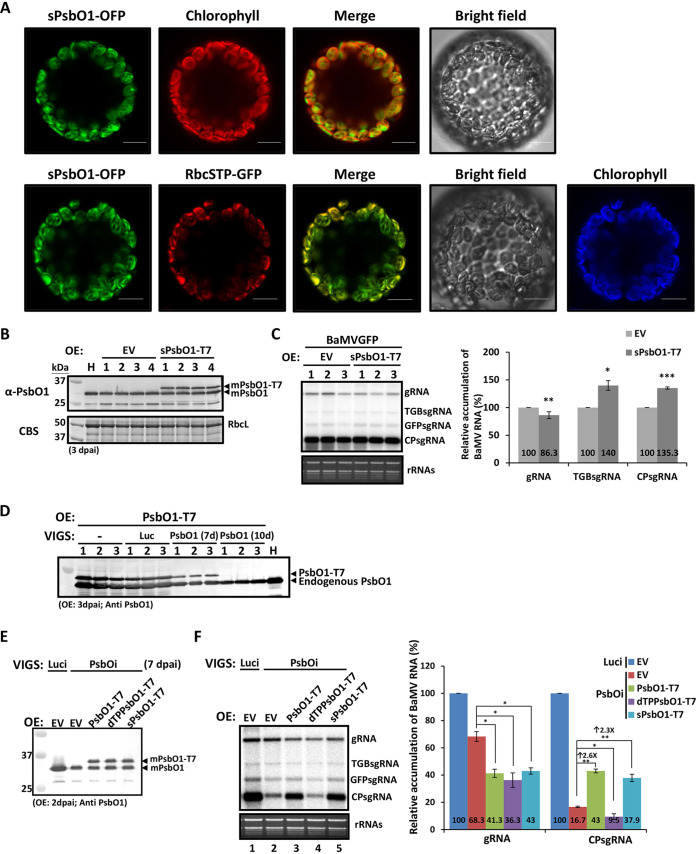 With insights from current and previous studies, we propose a hypothetical model to illustrate the stages at which NbPsbO1 participates in BaMV RNA transcription. This model also highlights the differential requirement of NbPsbO1 for synthesis of BaMV gRNA and sgRNAs. Once BaMV enters a host cell, the RNA genome is used as a template for translation of the replicase.
With insights from current and previous studies, we propose a hypothetical model to illustrate the stages at which NbPsbO1 participates in BaMV RNA transcription. This model also highlights the differential requirement of NbPsbO1 for synthesis of BaMV gRNA and sgRNAs. Once BaMV enters a host cell, the RNA genome is used as a template for translation of the replicase.
Voltage-dependent anion channel proteins associate with dynamic Bamboo mosaic virus-induced complexes
 The present data provide evidence that NbVDACs associate with the dynamic BaMV-induced complex to facilitate the replication of BaMV, which suggests the presence of mitochondrial proteins in the viral complex for the promotion of virus accumulation.
The present data provide evidence that NbVDACs associate with the dynamic BaMV-induced complex to facilitate the replication of BaMV, which suggests the presence of mitochondrial proteins in the viral complex for the promotion of virus accumulation.
Nicotiana benthamiana Argonaute10 plays a pro-viral role in Bamboo mosaic virus infection
 It was shown that with BaMV infection, the P28 RNA-silencing suppressor upregulates the gene expression and protein accumulation of NbAGO10, which might compete with antivirally active NbAGO1 for binding BaMV vsiRNA. The cleavage of BaMV RNA target would be inhibited and thus a high level of viral RNAs would accumulate. Moreover, NbAGO10 recruiting SDN1 might promote the degradation of BaMV vsiRNA (Fig. 7). The present data provide the evidence that the virus hijacks AGO10-directed suppression of AGO1-mediated antiviral silencing to help with virus invasion, which represents a novel strategy of RNA silencing suppressors (RSSs) to counteract antiviral RNA silencing.
It was shown that with BaMV infection, the P28 RNA-silencing suppressor upregulates the gene expression and protein accumulation of NbAGO10, which might compete with antivirally active NbAGO1 for binding BaMV vsiRNA. The cleavage of BaMV RNA target would be inhibited and thus a high level of viral RNAs would accumulate. Moreover, NbAGO10 recruiting SDN1 might promote the degradation of BaMV vsiRNA (Fig. 7). The present data provide the evidence that the virus hijacks AGO10-directed suppression of AGO1-mediated antiviral silencing to help with virus invasion, which represents a novel strategy of RNA silencing suppressors (RSSs) to counteract antiviral RNA silencing.
The Role of a Nascent Polypeptide-Associated Complex Subunit Alpha in Siderophore Biosynthesis, Oxidative Stress Response, and Virulence in Alternaria alternata
 A. alternata utilizes multifaceted signaling transduction pathways to perceive and respond to a broad diversity of environmental cues. Nac1 apparently facilitates the orchestration of important regulatory pathways, which could allow A. alternata to properly respond to environmental stress and enhance its ability to infect the host plant.
A. alternata utilizes multifaceted signaling transduction pathways to perceive and respond to a broad diversity of environmental cues. Nac1 apparently facilitates the orchestration of important regulatory pathways, which could allow A. alternata to properly respond to environmental stress and enhance its ability to infect the host plant.
The G protein subunit α1, CaGα1, mediates ethylene sensing of mango anthracnose pathogen Colletotrichum asianum to regulate fungal development and virulence and mediates surface sensing for spore germination

This study demonstrates that spore germination, appressorium formation and virulence of the mango pathogen C. asianum are regulated by ethylene via the signaling of CaGa1. In addition, we discovered that CaGa1 is a negative regulator of hydrophobic surface sensing for spore germination. Several virulence-related genes have been identified as ethylene-responsive genes in C. asianum.
